
Godbricks: Let's start out with learning something about you. Where are you from and what's your religious background? Were you raised in the Muslim faith, or is it something you came to more recently?
Mezba Mahtab: I was born a Bangladeshi, and brought up in the Middle East. My family moved to Toronto, Canada when I was 18. I was raised as a practicing Muslim, but what may interest many people is that I have learned more about being a Muslim and about Islam by living in Canada. Living with, and having the lovely opportunity of meeting with people of various faiths and cultures often means we grow more curious about our own.
GB: How about your background with LEGO? Has this hobby always been a part of your life? Did you go through any sort of Dark Age?
MM: I have to credit my wife for bringing me out of my two-decade-long Dark Ages. As a kid, I grew up with plenty of LEGO. My first set was the LEGO 6374-1 (Holiday Home), a set I still have, in addition to various Pirate and LEGO System sets. However, for twenty years, LEGO lay as some forgotten chapter of my life, until early last year.
On our anniversary, my wife surprised me with Brickbeard’s Bounty (LEGO 6243-1), having once heard how I had often wanted a LEGO ship as a kid. Suddenly, it was as if I was ten, and suddenly my LEGO collection had grown tenfold – and then I discovered sales, clearances, and the wonderful AFOL community. I sometimes think my wife regrets getting me that gift, especially after I found out about Bricklink!

GB: What led you to combine your Islamic faith and your LEGO hobby?
MM: I think it was a natural progression that combined my hobbies of blogging, photography and LEGO. I have a personal blog (a Bengali in T.O.) where many times I have discussed (sometimes controversial) topics related to Islam and Muslims. I often find that the Quran is being quoted out of context to make a point, even by Muslims.

Just to give you an example, most sane people would say that Muslims and non-Muslims should live together in harmony and in friendship. Yet there are some people who claim the two groups cannot be friends, and they point to verse 1 from chapter 60 in the Quran. In there, God is telling the Muslims, “Do not take My enemy and your enemy as friends (or protectors)”.
Yet, as my rendering shows, the context of how the verse was revealed, the application of it, and the VERY NEXT VERSE (verse 8) that immediately clarify it, all leads to a much more practical, moderate, and saner conclusion.

I therefore thought, and thought hard, of how I could have an interesting medium to preach the Quran and its moderate message, and this led me to toys, and LEGO.
GB: Could you describe for us the concept behind Teaching Kids the Holy Quran? What is your goal and how did you start this project?
MM: To answer this, you have to understand that one of the quirks about being Muslim is that we believe faith alone is not enough; we also have to have good actions and do acts of worship for eternal salvation. For this reason, we are taught at an early age how to read the Quran (as an act of worship). Basically, we learn to read the Arabic script, and most of us can recite the Arabic verses, without knowing or understanding ANY of it.
So when I wanted to develop a medium to help Muslims understand the Quran, I wanted to reach kids, because they are most inquisitive, and as a kid I remember being curious myself as to what these verses meant. LEGO seemed a perfect fit.
I started this project when I purchased the Prince of Persia sets. The character of Nizam seemed great as a villain, which I needed for my first rendering (Chapter 107, which dealt with Alms Giving).

At that time, the blog was more of a Quran project than a LEGO project, and so was quite minimalistic in nature. Even though I had come out of my Dark Ages, I hadn’t done a lot of building of MOCs; it was mostly building official sets. For my project, I used minifigures and some basic builds. However, as this blog has progressed, I have started to include more and more LEGO details into my work.
GB: What sort of reception have you gotten from the Islamic community? What sort of reception have you gotten from the LEGO community? Have you received any criticism?
MM: I have to say the reception from the Islamic community has been fantastic. I started the blog in October 2010, and already the blog averages anywhere between 100 to 300 daily visits, with the highest daily visitor count close to 500. My Facebook page, started quite recently, has already over 250 fans. MuslimMatters, the no.1 Muslim blog, as voted by the renowned Brass Crescent, had just picked my blog as Art of the Month in January. Two teachers in private schools in Ontario, Canada, as well as teachers in Abu Dhabi, UAE, have emailed me that they use my blog as visual aids in their classrooms. The blog has also been linked to from numerous blogs, as stated on my “Mentions” page.
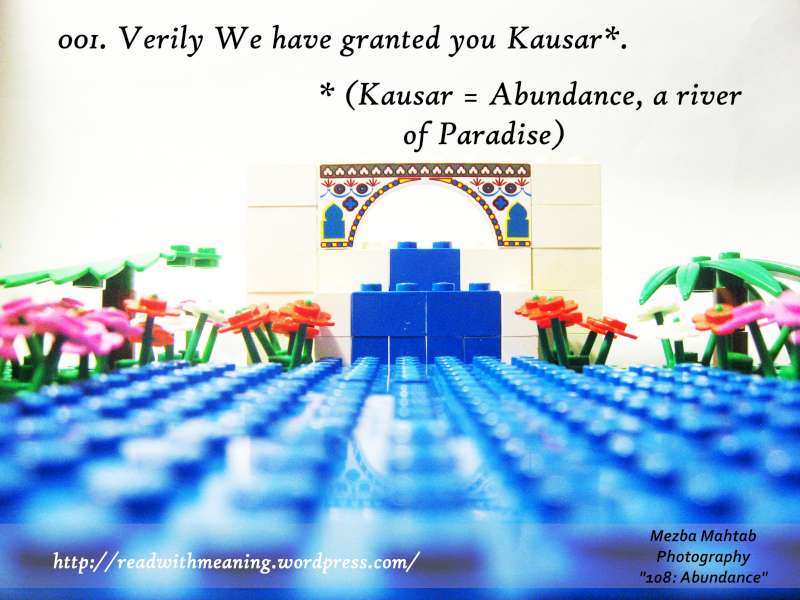
I feel my blog still has a lot of potential to grow in the LEGO community. Till this time, most of my efforts to promote the blog has been in the Muslim blogosphere and Islamic forums. I felt that, to be taken seriously, the blog has to first achieve credibility and acceptance from the Muslim community at large, which has happened. So far, my work is quite unique; there are no blogs or websites that combine Islam and LEGO like I do.
I feel that, to get much more prominence in the larger LEGO community, I have to build more and include more LEGO architecture in the details. Till now, I had been in graduate school, which is now done, so I have more time on my hands to devote to this project. There are two huge chapters in the Quran that are coming up on my blog soon; one of them deals with the story of Prophet Yusuf (Joseph in the Bible), that I plan to build with lots and lots of details.
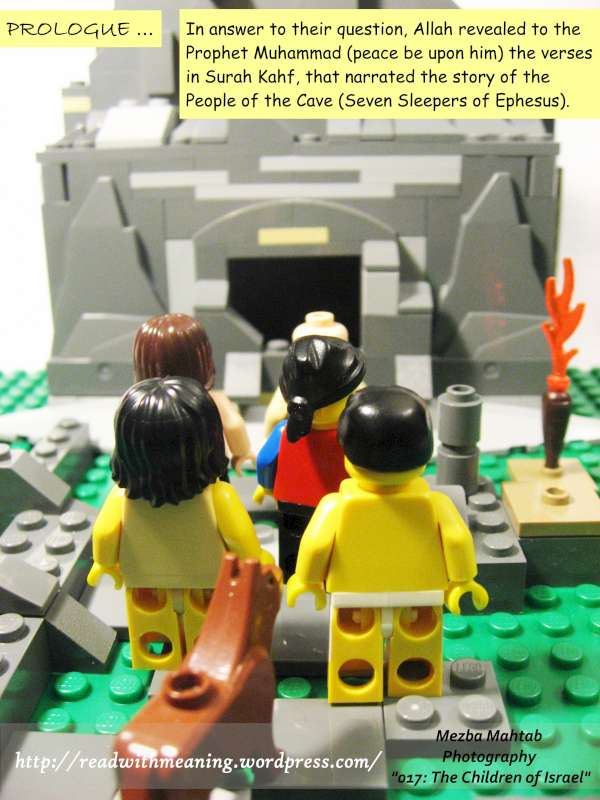
I am pleased that due to my strict adherence to some guidelines, I have not run into much controversy or criticism with my project yet.
GB: You mentioned that you may turn this into a book. Could you give us any more on this? Is this something we can expect to find in bookstores soon?
MM: It is every bloggers’ dream to have their work published as a best seller book, is it not? :-) I see a lot of potential in this – most of the fans on my Facebook page are Muslim mothers with young families, and they love it as they can use it to teach their children. Every kid loves LEGO and toys, and there isn’t a similar Islamic project online.
I have already been in talks with a couple of publishers of children’s books, so do wish me luck, hopefully we can get something out soon.
GB: Many of our readers are familiar with the Brick Testament, where Brendan uses minifigs to depict Jesus and other Biblical characters, but my understanding is that Islam frowns upon depictions of individuals, or at least of certain individuals (e.g. the Prophet Muhammad). How has that limited you? Or how have you found creative ways to work around this?
Islam does frown upon on depicting notable figures or other Beings such as God or angels in sculptures and other depictions; however if you look at Islamic history they have had a rich history of great art work. I think the original dislike of depicting notable historical figures is that it leads to some form of idolatry – the example often cited is that in historic times people did not worship Krishna or Buddha as gods, yet made sculptures to remember them. Later generations then went to the next level and started to worship these idols. Thus, even when Hollywood movies such as The Message was released, the character of Prophet Muhammad, or his immediate family such as Ali, or close friends such as Umar, were not depicted or shown on screen.
I have devised some guidelines of my own that I follow in my portrayals, which while not limiting, makes the depictions more creatively challenging. Take the example of the Islamic story of Christmas where I had to show Maryam (Mary) and the birth of Isa (Jesus Christ) without depicting either of them.

I also know from general experience that when Muslims are viewing an art work telling Islamic stories, they will allow certain leeway (for example portraying some of the Companions of the Prophet) while having certain reservations (such as definitely NOT portraying the Prophet Muhammad or his immediate family). As an artist who is working to benefit understanding of Islam, I have to respect those objections.
GB: Is there an illustration of the Quran on your site that you are particularly proud of?
MM: I particularly like Chapter 105 (The Elephant), as the depictions follow very closely with the aims of this blog – it’s a good story told in a simple projection, easy enough for kids to understand while also good enough for adults.
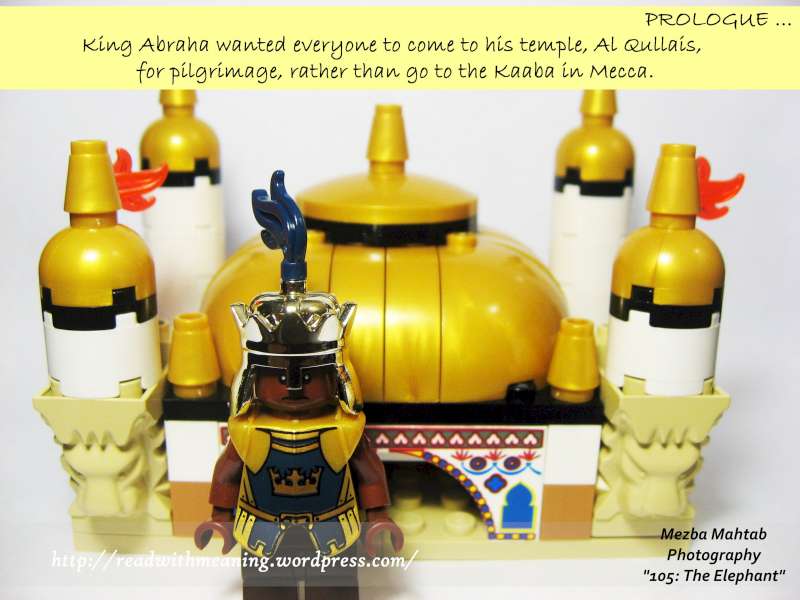
Most of the Chapters that I started building are small chapters, usually the first ones taught to Muslim kids to memorize, and contain a small number of verses. The Chapter (The Cave), which amongst others deals with the stories of the Seven Sleepers of Ephesus, the Gog and Magog, the Green One and the legendary character known as Zul Qarnayn, had over a 100 verses – that was the largest chapter done completely so far on my blog.

In my graduate school last year, we were studying the financial crisis of 2008, and this is when I started to build Chapter 83 – the Defrauders (http://readwithmeaning.wordpress.com/2010/12/14/chapter-83-al-mutaffifin-the-defrauders-verses-1-6/ ), and what most pleased me about this chapter was how I managed to portray ancient verses in a modern setting.
GB: Is there a passage of the Quran that gave you particular difficulties, or that you skipped because it was too difficult to depict in LEGO form?
There is a chapter in the Quran that deals with God Himself (Chapter 112) that was hard to portray following my guidelines, as it was just about God (and the Islamic rejection of Trinity). So I took the aid of characters in a multi-faith setting to illustrate that chapter.
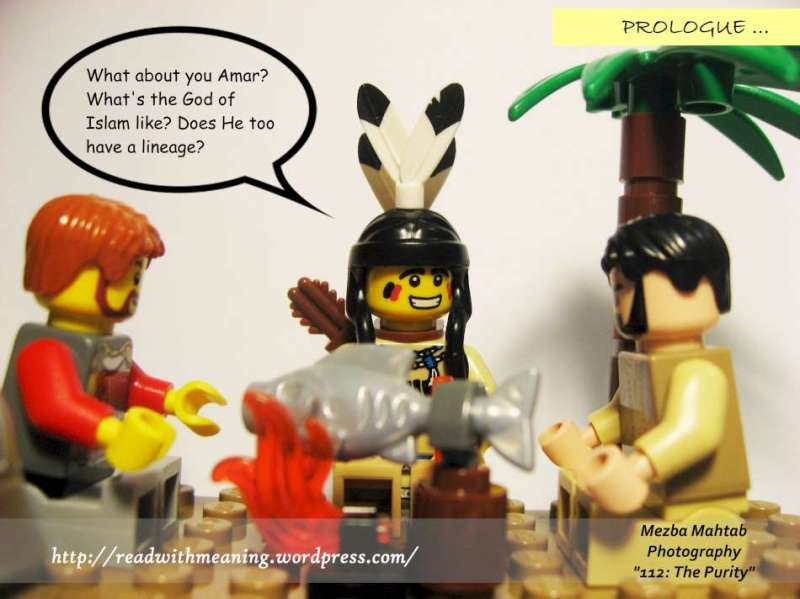
A challenge (in general) in depicting Quranic verses is that unlike the Bible, which is a collection of linear historic stories or personal accounts of historic events in chronological order, the Quran is more of a conversation between God and man. It’s Allah’s instructions to Muslims, and the flow is not always of events or stories in order. For example, Allah will be talking about unbelievers and the arrogance of oppressors, and then you will have the story of Pharoah and the tribes of Israel. In other places, God talks about how to deal with hardships, and then the story of Ayub (Job in the Bible), or how Yusuf (Joseph) was imprisoned, will be mentioned. So the stories in Quran are more to illustrate God’s instructions, or to provide an example for people to relate with, as God is relating certain commandments. Thus, when portraying these verses, which sometimes jump across various related stories, I have to keep the flow in mind for the depictions.
An example of this was Chapter 18 (The Cave), which talks about Trinity, Faith, oppressors, Pride, denial of God, etc. all in one chapter, and there are many sub-story branches within.
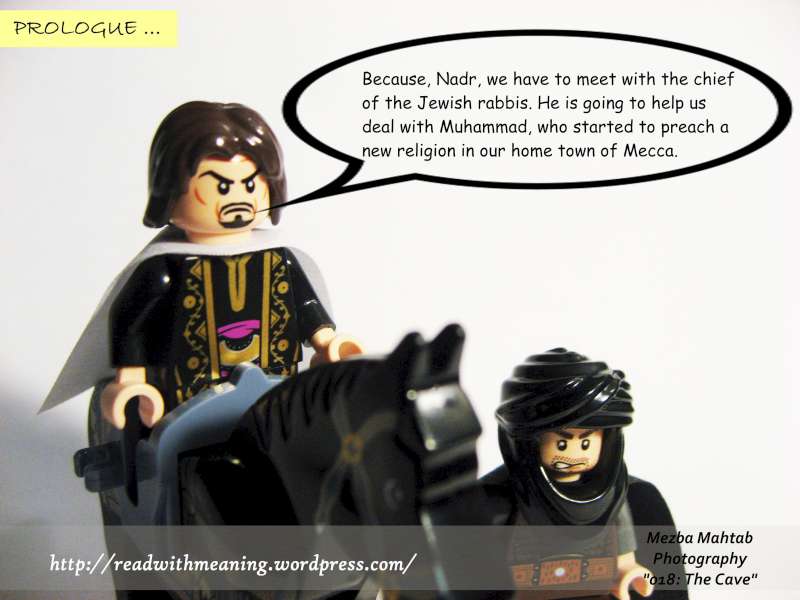
GB: What's next for you? Do you see the Teaching Kids the Holy Quran project going on for a long time in the future? Or do you have another project in the works?
MM: Right now I plan to be committed to the Teaching Kids the Holy Quran project for the conceivable future; time and opportunity permitting. Currently, the blog holds just over 450 illustrations of over 21 chapters of the Quran. The Quran has a total of 114 chapters, containing over 6000 verses in all, so there is clearly a long way to go.
GB: A couple of questions apart from your site, but just for you as a Muslim and a LEGO fan: A few years ago there were some in the Muslim world who called for a boycott on LEGO and all things Danish in the wake of the controversy (and violence) following a series of cartoons in a Danish newspaper. Has that gone away, or is there still some suspicion of LEGO?
MM: In my opinion, the Muslim world is too big and diverse to have a unified stance on this; we saw that most of the boycotts came from the affluent Gulf Arab countries, while, sadly, the violent reactions came from poor communities in Afghanistan and Pakistan.
I was visiting the United Arab Emirates during the cartoon crisis, and remember going into Carrefour (which coincidentally is a European owned store). They had an empty shelf that used to contain dairy products from Denmark, with a sign saying this was due to the boycott. I do NOT remember there being a boycott of LEGO though – the boycott seemed to be restricted to dairy products, and that too in Western owned stores. I was in UAE again a couple of months ago, and saw LEGO being sold in Dubai Mall at the Hamley’s store. Most of the rhetoric against LEGO seemed to come from a few loudmouth radicals, with hardly any noticeable consequence. I think the Muslim world in general has moved on from the cartoon crisis.

GB: On the other hand, two of the upcoming LEGOland parks will be in primarily Muslim countries (Malaysia and the United Arab Emirates). Do you see LEGO as becoming more popular outside of its traditional European and American markets (I realize you're in Canada, but you probably have a much greater insight into this than I do)?
MM: I think it’s a fantastic idea. UAE and Malaysia are both excellent tourist destinations with lots of visitors, and I can see LEGOland doing quite well. Many Asian countries such as India have a growing middle class with greater disposable income, so there is no reason why LEGO shouldn’t do well. However it needs to differentiate itself from other ‘block’ companies. Many people in Asia still see LEGO as just another construction toy, not the construction toy.
GB: GodBricks readers are very familiar with LEGO depictions of many of the great Christian cathedrals. On the other hand, there are so many beautiful mosques that would make amazing MOCs. Is there a particular mosque that you would love to see made in LEGO form? Or one that has already been made in LEGO?
MM: I would love to see the Grand Mosque in Abu Dhabi, UAE, being made into a LEGO. It’s grand enough to be visually dazzling, yet simplistic enough in its design to be easily converted to LEGO. I visited the mosque in January and was amazed at the splendid architecture.

A couple of other mosques that can be converted to LEGO and would look dazzling would be the Blue Mosque of Istanbul, Turkey or the Jama Masjid of Delhi, India.


GB: Thanks for all your responses! Before we go, since most of my readers are probably not Muslim, is there one message you would like them to hear about Islam or the Quran?
MM: First of all, I would like to offer my thanks for giving me this opportunity to share a bit of my work and project with you and your readers. Long before I started this project, I followed your blog and the amazing links you share.
Second, for any non-Muslims who are curious about Islam, I would like to say that the Quran is only about one central message – there is One God and He alone should be worshiped without any partners, and Muhammad was sent to preach that Message, just like previous prophets Musa (Moses) and Isa (Jesus). This message doesn’t leave much room for violence, and I invite everyone to read and judge the Quran themselves. And for explanations about historical context and explanations, they can visit my blog.
Regards,
Mezba
No comments:
Post a Comment